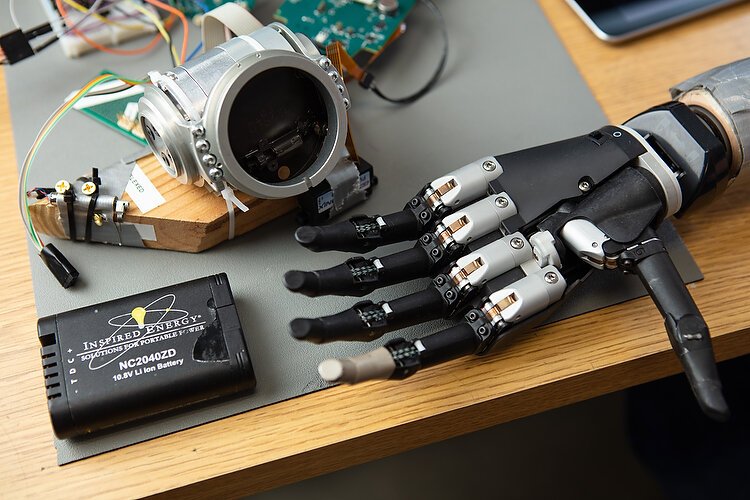UIX: Grand Rapids’ first Bicycle Action Plan reflects the future of urban transportation
Public transit and dedicated lanes for non-motorized vehicles make it possible for more people to get to their jobs, homes, schools, and other destinations faster and more reliably than ever before, but they've also faced challenges in implementation, not just from city leaders, but from residents themselves. Here are the people who are finding out just how Grand Rapidians feel about bicycling in their city, and the plans they are implementing to increase bicycle access, adoption, and awareness.
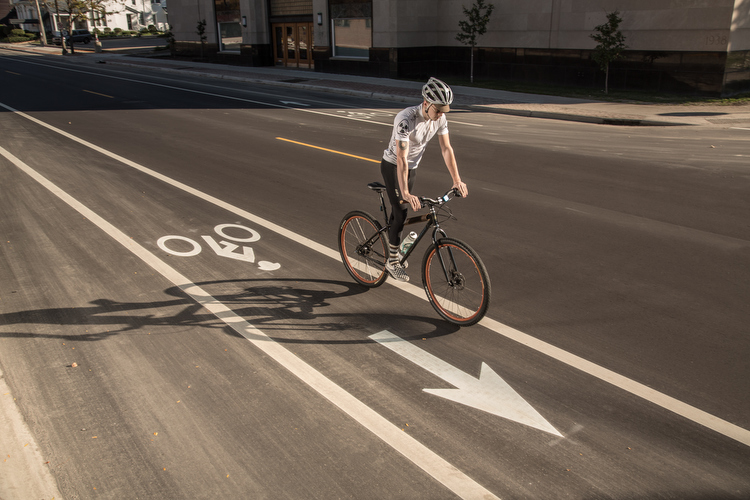
When someone asks you how you get around, do you answer with four wheels, or two?
There are 1,957 miles of roadway in Kent County. That includes 27 different bus routes traversing the north, east, and western county borders, and as far west as Grand Valley State University in Ottawa County. As well, 98 miles of bicycle lanes, line sidewalks and crosswalks for foot traffic and scooter commuters.
If you don’t have a car, there are many options to get you where you’re going, and if you still need one, you can even hire a driver from the region’s own ridesharing app.
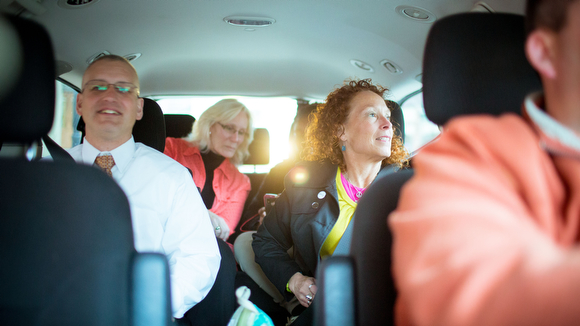
Transit is important to Grand Rapidians, and the city itself. Access to public and automobile-alternative transportation is not just a sign of a flourishing economy, but a catalyst for it.
In Melbourne, Australia, bicycle acceptance has prompted economic upswing, with 3.5% more purchases reported from local shops after on-street parking was replaced with cycling lanes. The same strategies, applied to communities in the Eastern U.S., have increased property values, and have become an important factor in home buying decisions.
In large metropolitan areas, depending on their size, diverse transit options have the potential to impact the local economy by millions, or even billions, according to a report published in “Urban Studies.”
“In the case of central city employment density, estimated wage increases range between $1.5 million and $1.8 billion per metropolitan area yearly for a 10% increase in transit seats or rail service miles per capita,” wrote Planning scholar Daniel Chatman of the University of California at Berkeley and fellow planner Robert Noland of Rutgers University.
Public transit and dedicated lanes for non-motorized vehicles make it possible for more people to get to their jobs, homes, schools, and other destinations faster and more reliably than ever before, but they’ve also faced challenges in implementation, not just from city leaders, but from residents themselves.
Seat level
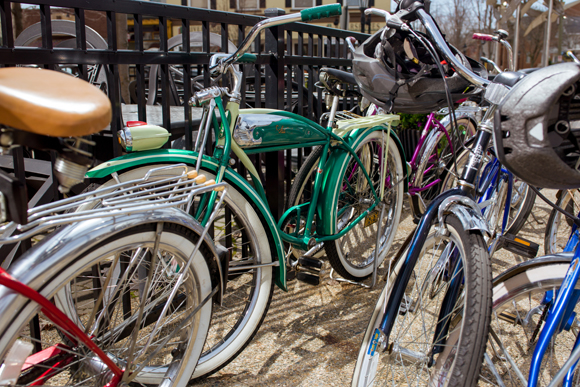
More bicycles are showing up in Grand Rapids than ever before, but many are still hesitant to strap on their helmets. The number of injuries and fatal accidents involving bicycle riders is nearly three times higher in Grand Rapids than other communities in Michigan, according to data from the Driving Change campaign.
“Some people are deterred from bicycle riding by fear,” says Tom Bulten, board member of the Greater Grand Rapids Bicycle Coalition (GGRBC). “But, studies are showing that it may be healthier and safer to ride a bicycle than to not.”

While Bulten admits, “Wide-scale bicycle riding will require a cultural shift in attitudes, perceptions, and values,” Grand Rapids is already seeing that shift occur. A Bicycle Action Plan that provides descriptions and recommendations for different types policies, programs, routes, and bicycling facilities, spearheaded by Mobile GR’s Kristin Bennett, is on track to be implemented by June. Meanwhile, the Driving Change campaign has been raising awareness of cyclists on the road, and actually shelving the term “cyclist,” deemed marginalizing to those humans who choose two wheels rather than four, since former mayor George Heartwell’s first Ride of Silence in 2005.
The groups involved in the city’s cycling culture and accessibility have similar aims, but work in slightly different contexts.
- The GGRBC – Created in 2009 by members of the Grand Rapids Bike Summit planning committee, the GGRBC is working to make concrete, visible improvements to the Grand Rapids metro area in order to increase healthy and safe bicycle opportunities through advocacy and education.
- Mobile GR Commission – A municipal department that makes sure all types of mobility are included in the City’s vision, including cars, bikes, public transit, pedestrians, and all the other ways people move around Grand Rapids.
- The Driving Change campaign – An initiative put forth by the city of Grand Rapids, with the support of the Michigan Department of Transportation (MDOT), to raise awareness of bicycle safety.
The GGRBC is taking several steps to make West Michigan more welcoming and safer for people that ride bicycles, including:
- Educational seminars for local businesses and organizations to learn about smart cycling practices
- The ChainLink blog, print newsletter, email newsletter, Facebook page, and Twitter feed, where regular educational and informational stories about bicycle riding are posted
- Bicycle light distribution for those riding at night
- Safe bicycling advocacy in the form of technical assistance, consultation, advice, comments, and dialogue with the Grand Valley Metro Council, City of Grand Rapids, Mobile GR, Kent County Road Commission, and MDOT Regional Non-Motorized Investment Plans
- Bicycle-Friendly Business certification
- Free bicycle parking and bicycle valet during summer events
Even with these resources, bicycling in city streets isn’t everyone’s first choice of transportation.
“For some people, they’re really nervous about riding a bicycle in the road,” Bulten says. “And particularly turning left is a scary maneuver.”
To ease the tension, working with Mobile GR and the City of Grand Rapids, the organization has helped implement green boxes on some major roadways. Set back from the intersection about 10 to 15 feet, the box allows bicycle riders to move over into the left turn lane with confidence that automobile drivers will also know where they should be.
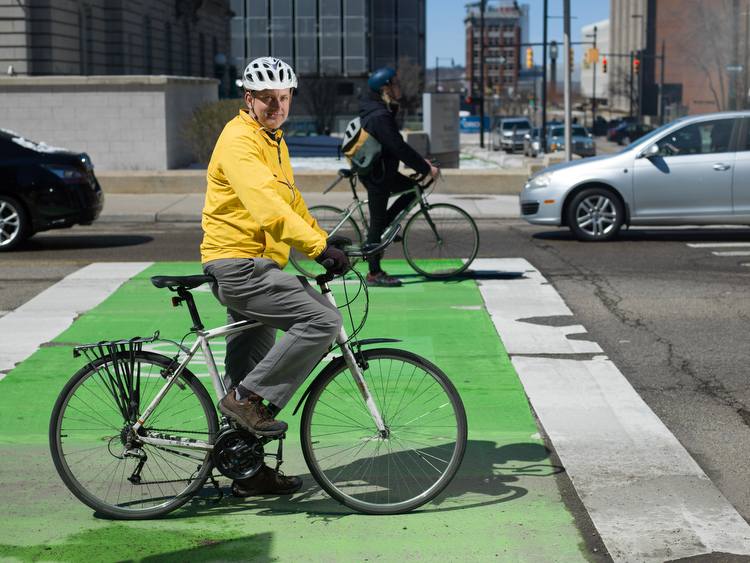
While it’s true the GGRBC is made up of dedicated bicycle riders, their aims have a measurable economic impact. A safe cyclist is one who’s saving money on transportation costs, and one who is putting that money back into the local community.
“The cost to own and operate a car is $7000 to $10,000 per year,” Bulten says. “One young, urban professional in Grand Rapids that we know recently bought a house with the savings from riding a bicycle and living car-free for a period. We think riding a bike is a great way to have fun, stay healthy, preserve the environment, and save money.”
According to Joshua Duggan, founder and current board member of the GGRBC, many in West Michigan do not drive because they don’t have an extra $7,000 to $10,000 a year, or may be physically unable to drive.
“Giving these people another transportation option makes our region more equitable and it helps employers who sometimes struggle to find ways for their employees to get to work,” he says.
Duggan serves as the GGRBC’s representative and a chairperson on the Vital Streets Oversight Commission. From that vantage point, he sees, and steers, how City streets are purposed and shared. Housing density is on the rise in Grand Rapids. There’s an agglomeration of more people in walkable and bikeable areas, and more of them riding their bicycles on short to medium-rage trips.
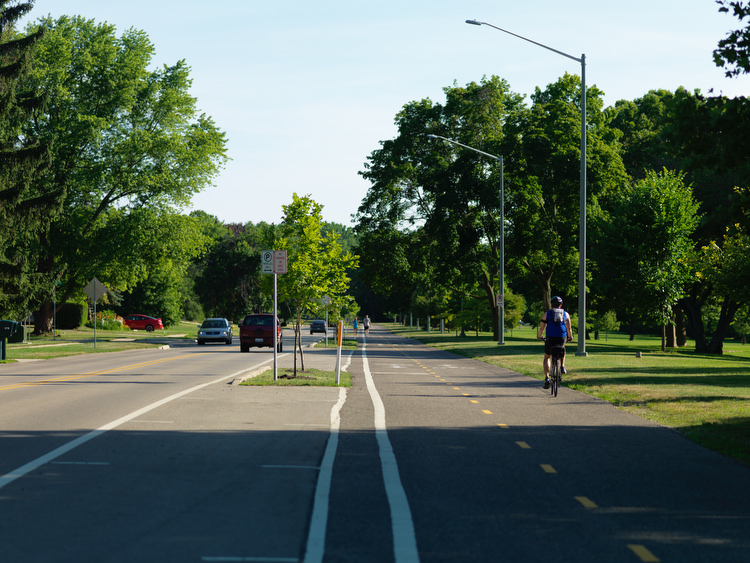
“I think we will continue to see more people take up bicycling as a convenient way to get to work, shopping, restaurants, events, and more,” Duggan says.
The future of transportation in West Michigan may see self-driving cars and packages delivered by drones, but it will undoubtedly see more helmets and handlebar bells, as well.
Street level
Most all methods of transportation rely on the same streets and sidewalks in West Michigan, and Mobile GR’s mission is to improve Grand Rapidians’ quality of life by getting more people to use active transportation.
According to Mobile GR board liaison Josh Naramore, whether people choose to take transit, walk, bike, carpool, or drive alone, it is important that those roadways work for everyone. If they don’t, Mobile GR finds solutions that do.
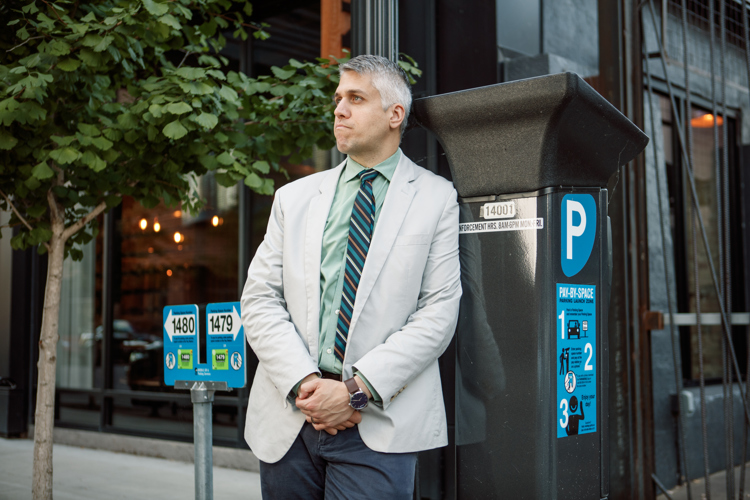
For example, in summer 2018, the city switched its smart parking meter services provider from Parkmobile to Motu. While on-street parkers bemoaned the change at first, the switch put more control over the system configuration into the hands of the city, unified the backend technology, and made it possible for Spanish-speaking parkers to understand the application, as well.
Bennett, Naramore’s colleague, has pushed what will be the city’s first Bicycle Action Plan through several stages of public input, commission review, and consultation. The plan’s initial implementation date of May 2019 was moved back to June as the newly finalized strategic plan took precedent, but the extra time will give Mobile GR and the city time to lay the foundation for a comprehensive bike-sharing system.
“If you’re going to have a bike-share system, you need to find out what people feel about it,” she says. “We’ve targeted our survey questions at specific neighborhoods, communities with diverse ages, and soliciting feedback from the city commission, because they’re not going to act without this plan.”
An avid cyclist herself, Bennett was born in West Michigan and attended Aquinas College before heading west to Eugene, Ore., for her master’s degree in pedestrian transit access. If Grand Rapids had the infrastructure or initiative to put such transit plans in place at the time, she says she may have stayed closer to home. Now that the spokes are in place, her expertise is being put to good use.
Like Bulten, Bennett has also heard safety concerns from the residents her team has reached out to, as well as at public events where bicycle riders are most likely to show up.
“Most people are interested in cycling, but concerned with safety,” she says. “There’s actually tremendous interest in the bike-share system within communities of color and the economically vulnerable, so we know it could provide value there.”
Other concerns voiced by stakeholders included road maintenance (potholes, street sweeping, snow plowing), bicycle theft, and access to important accompaniment like bike locks, lights, and tools. In contrast to the savings of owning a car, biking Grand Rapids may still prove a wiser financial choice, but that’s obviously not the only element weighed in this equation.
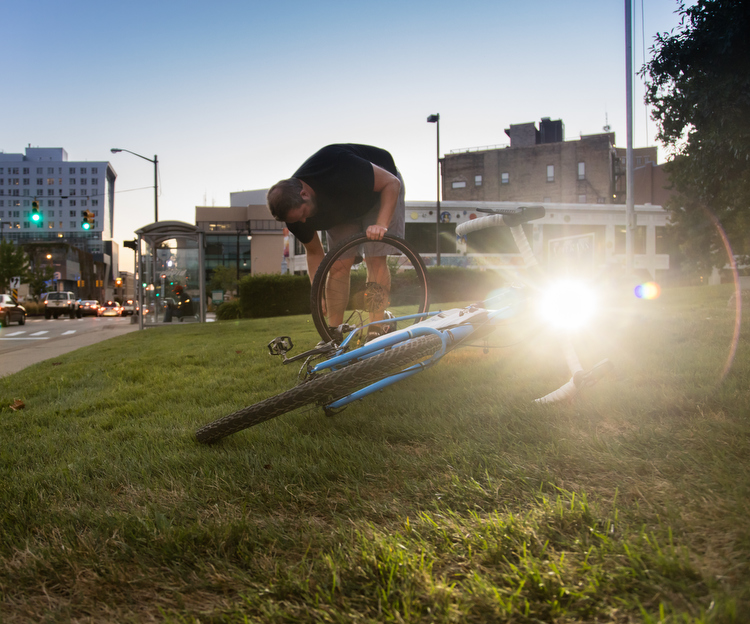
Bicycle riders have many different concerns, many different reasons for cycling, and many different needs. As such, the city’s Bicycle Action Plan will incorporate a variety of approaches. Striped lanes, paved shoulders, buffered biking lanes, shared lanes (sharrows), bike trails, and separated lanes are all part of the plan, many of them having already been implemented.
Some of these plans have been evolving for more than a decade, while others have taken less than a year to implement. But, work is being done, and like previous transit projects in Grand Rapids, forward momentum is all it needs.
Duggan likens bicycle adoption and acceptance to the Grand Rapids Area Transit Authority (GRATA), the bus line before the The Rapid was formed in 2000.
“There was very limited service and times. It didn’t cover a large enough area and the equipment was old and outdated,” he says. “Once major investments were able to be made, it now serves millions of trips every year and continues to modernize and improve. A similar commitment is needed to upgrading our bicycle infrastructure network and installing bicycle parking so that it feels safe and accessible to most citizens and takes them where they want to go.
“We have done a great job with the low-hanging fruit over the past eight to nine years, but now that the planning is done, it’s time to implement and invest in a complete network of bicycle boulevards, separated bikeways, commuter routes, and trails, using the Vital Streets Plan and the Bicycle Action Plan as a map to guide us there.”
For more information on the city’s Bicycle action plan, visit https://www.grandrapidsmi.gov/Government/Programs-and-Initiatives/Bicycle-Action-Plan.
To learn about the Driving Change campaign, visit http://grdrivingchange.org/about/
And, for more on the Greater Grand Rapids Bicycle Coalition, visit https://www.bikegr.org/
Urban Innovation Exchange highlights the people and projects transforming West Michigan through sustainable efforts. Matthew Russell is the editor for UIX Grand Rapids. Contact him at matthew@uixgrandrapids.com.
Photography by Adam Bird of Bird + Bird Studio.



